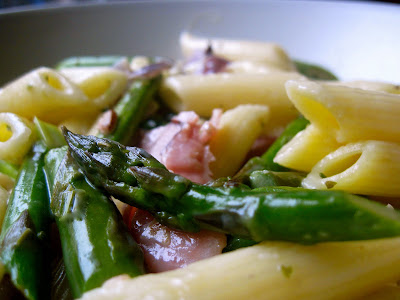Children's tastes and preferences change like the wind, at least my children's do. At one meal, my toddler and preschooler might guzzle down a chicken and vegetable stir-fry, only to completely reject it the next time it's served. So how do you get your kids to eat their vegetables? Perhaps you like to disguise them like Jessica Seinfeld does in her recipe book "Deceptively Delicious
I don't always get it right, but I've found a few things to be worth trying:
Perseverance
It's easy to get put off if your child rejects something the first time, but by offering a small piece every now and then will get them used to the idea and you may be pleasantly surprised.
Get them involved
At the grocer (or even better, in your garden) ask them to help you pick out a vegetable they would be willing to try; at home involve them in the preparation, safe things like rinsing or arranging them on a plate.
Be aware of textures
Daughter #1 is very sensitive to certain textures so she tends to dislike cooked mushrooms and peppers ('too slimy!').
Don't nag or get involved in a power struggle
I still use mushrooms and peppers regularly in my cooking, and Daughter #1 knows she will not be forced to eat them, maybe just asked to give it a try once in a while.
Variety
Colour, presentation and varied cooking methods will prevent boredom. Soups, vegetable kebabs, interesting dips or dressings, and stir-fries are worth a try.
Peer pressure
My toddler loves to get what everyone else in the family gets, even if it's a serving of Korean-style bean sprouts.
Set a good example
Do you eat your veggies?
Compromise
Don't feel bad if you land up peeling the cucumber or eggplant, or sprinkling cheese on cauliflower again, if it means they will eat it.
Which brings me to today's recipe. I know puff pastry is not the healthiest thing to eat, but making a pot-pie means you use less pastry than a pie with a base and you can combine it with almost any vegetable/meat mix you fancy. I used what I had in the house (I had some leftovers from a chicken I poached for some chicken soup), but I also like to use a mushroom/spinach/fish combination in a white sauce. I brushed the pastry with milk instead of egg as Toddler has an egg-allergy. The kids loved it, for today at least!
Chicken and Vegetable Pot-Pie
Ingredients
Shredded chicken from a whole poached/roasted chicken, skin removed
1-2 large cloves garlic, finely chopped
1 medium onion, chopped
1 punnet (200g) mushrooms, sliced
1 cup frozen peas
1 teaspoon dried herbs
1 small head of broccoli, cut into pieces
1 cup chicken stock
2 heaped teaspoons corn flour, adjust depending on thickness of sauce
Salt and pepper to taste
1 sheet puff pastry, defrosted in fridge
Little milk (or egg) for brushing pastry
Directions
Sauté onions and garlic in a little oil until tender.
Add mushrooms, peas, broccoli and herbs.
Toss in chicken.
Add about 1 cup of chicken broth/stock and bring to the boil.
Season to taste.
Combine corn flour with a little cold water and pour into the mixture. Let it boil until liquid thickens to a gravy consistency.
Pour the mixture into a pie dish.
Unroll defrosted pastry and cover the pie dish.
Use a fork to poke holes into the pastry to allow hot air to escape.
Brush pastry with milk (or beaten egg).
Bake at 180 degrees Celsius for about 20 minutes or until the pastry is golden brown.





